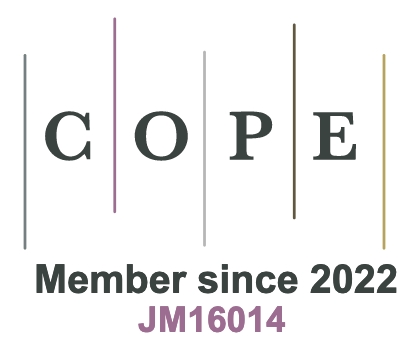REFERENCES
1. Li, Q.; Yang, X.; Li, X.; et al. Cross-scale optimization of interfacial adhesion and thermal-mechanical performance in carbon fiber-reinforced polyimide composites through sizing agent evolution. Compos. Sci. Technol. 2025, 266, 111174.
2. Wang, N.; Li, X.; Cao, W.; et al. Lightweight polyimide nanocomposites with 3D cocarbonized MXene/carbon fiber networks for electromagnetic interference shielding and high-temperature stability. ACS. Appl. Nano. Mater. 2025, 8, 7347-59.
3. Yuan, H.; Hu, S.; Zhou, Y.; et al. Enhanced electrical properties of styrene-grafted polypropylene insulation for bulk power transmission HVDC cables. CSEE. J. Power. Energy. Syst. 2024, 10, 361-70.
4. Wang, K.; Wang, Q.; Wang, L.; Chen, D.; Ma, Y.; Yang, W. Sustainable furfuryl alcohol-based flame retardants with regular spherical morphology: endow polypropylene with excellent flame retardancy, smoke suppression, and mechanical properties. Chem. Eng. J. 2024, 496, 153848.
5. Sui, H.; Wu, K.; Zhao, G.; Yang, K.; Dong, J.; Li, J. Greatly enhanced temperature stability of eco-friendly polypropylene for cable insulation by multifold long-chain branched structures. Chem. Eng. J. 2024, 485, 149811.
6. Zhou, G.; Li, L.; Wang, D. W.; et al. A flexible sulfur-graphene-polypropylene separator integrated electrode for advanced Li-S batteries. Adv. Mater. 2015, 27, 641-7.
7. Reale Batista, M. D.; Drzal, L. T.; Kiziltas, A.; Mielewski, D. Hybrid cellulose-inorganic reinforcement polypropylene composites: lightweight materials for automotive applications. Polym. Compos. 2020, 41, 1074-89.
8. Wu, G.; Lei, L.; Wu, Y.; Yu, F.; Li, J.; He, H. Preparation and characterization of polypropylene/sepiolite nanocomposites for potential application in automotive lightweight materials. Polymers 2023, 15, 802.
9. Antosik, A. K.; Kowalska, U.; Stobińska, M.; et al. Development and characterization of bioactive polypropylene films for food packaging applications. Polymers 2021, 13, 3478.
10. Dixit, S.; Yadav, V. L. Optimization of polyethylene/polypropylene/alkali modified wheat straw composites for packaging application using RSM. J. Clean. Prod. 2019, 240, 118228.
11. Echeverria, C. A.; Pahlevani, F.; Sahajwalla, V. Valorisation of discarded nonwoven polypropylene as potential matrix-phase for thermoplastic-lignocellulose hybrid material engineered for building applications. J. Clean. Prod. 2020, 258, 120730.
12. Blazy, J.; Blazy, R. Polypropylene fiber reinforced concrete and its application in creating architectural forms of public spaces. Case. Stud. Constr. Mater. 2021, 14, e00549.
13. Frankenbach, L. A.; Lukoschek, S.; Kruppke, I.; Cherif, C. Multifilament spinning of mechanically recycled polypropylene from post-consumer sources for a circular economy in textile applications. Sci. Rep. 2025, 15, 14047.
14. Karaduman, Y.; Onal, L. Flexural behavior of commingled jute/polypropylene nonwoven fabric reinforced sandwich composites. Compos. B. Eng. 2016, 93, 12-25.
15. Raee, E.; Kaffashi, B. Biodegradable polypropylene/thermoplastic starch nanocomposites incorporating halloysite nanotubes. J. Appl. Polym. Sci. 2018, 135, 45740.
16. Zhang, X.; Yu, N.; Ren, Q.; et al. Janus nanofiber membranes with photothermal-enhanced biofluid drainage and sterilization for diabetic wounds. Adv. Funct. Mater. 2024, 34, 2315020.
17. Ludwicka, K.; Kolodziejczyk, M.; Gendaszewska-Darmach, E.; et al. Stable composite of bacterial nanocellulose and perforated polypropylene mesh for biomedical applications. J. Biomed. Mater. Res. B. Appl. Biomater. 2019, 107, 978-87.
18. Xu, S.; Li, S. Y.; Zhang, M.; et al. Fabrication of green alginate-based and layered double hydroxides flame retardant for enhancing the fire retardancy properties of polypropylene. Carbohydr. Polym. 2020, 234, 115891.
19. He, S.; Deng, C.; Zhao, Z.; Chen, Z.; Wang, Y. Hyperbranched polyamide-amine based phosphorous-containing flame retardant for simultaneous flame retardancy and high performance of polypropylene. Compos. B. Eng. 2023, 250, 110431.
20. Shaw, S. D.; Blum, A.; Weber, R.; et al. Halogenated flame retardants: do the fire safety benefits justify the risks?. Rev. Environ. Health. 2010, 25, 261-305.
21. Ferry, L.; Lopez Cuesta, J.; Chivas, C.; Mac Way Hoy, G.; Dvir, H. Incorporation of a grafted brominated monomer in glass fiber reinforced polypropylene to improve the fire resistance. Polym. Degrad. Stab. 2001, 74, 449-56.
22. Chen, X.; Xu, G.; Zhang, S.; et al. Improving the flame retardancy of the polypropylene/aramid fiber composites by the introduction of decabromodiphenyl ethane and antimony trioxide. J. Appl. Polym. Sci. 2013, 127, 1446-53.
23. He, W.; Song, P.; Yu, B.; Fang, Z.; Wang, H. Flame retardant polymeric nanocomposites through the combination of nanomaterials and conventional flame retardants. Prog. Mater. Sci. 2020, 114, 100687.
24. Tang, W.; Qian, L.; Prolongo, S. G.; Qiu, Y.; Wang, D. Macromolecular piperazine/aluminum phosphate hybrid and its efficient intumescent flame retardant/thermal conductive polypropylene. Chem. Eng. J. 2024, 495, 153162.
25. Zheng, Z.; Liu, Y.; Dai, B.; Meng, C.; Guo, Z. Fabrication of cellulose-based halogen-free flame retardant and its synergistic effect with expandable graphite in polypropylene. Carbohydr. Polym. 2019, 213, 257-65.
26. Yuan, Z.; Wen, H.; Liu, Y.; Wang, Q. Synergistic effect between piperazine pyrophosphate and melamine polyphosphate in flame retarded glass fiber reinforced polypropylene. Polym. Degrad. Stab. 2021, 184, 109477.
27. Wang, Y.; Guo, R.; Zhang, J.; Wang, H.; Niu, B.; Yan, H. P/N/Si-rich and flexible coating imparting polypropylene excellent flame retardancy without compromising its inherent mechanical properties. Chem. Eng. J. 2024, 487, 150519.
28. Tamasi, M. J.; Patel, R. A.; Borca, C. H.; et al. Machine learning on a robotic platform for the design of polymer-protein hybrids. Adv. Mater. 2022, 34, 2201809.
29. Reis, M.; Gusev, F.; Taylor, N. G.; et al. Machine-learning-guided discovery of 19F MRI agents enabled by automated copolymer synthesis. J. Am. Chem. Soc. 2021, 143, 17677-89.
30. Zhu, M.; Song, H.; Yu, Q.; Chen, J.; Zhang, H. Machine-learning-driven discovery of polymers molecular structures with high thermal conductivity. Int. J. Heat. Mass. Transf. 2020, 162, 120381.
31. Ma, R.; Zhang, H.; Xu, J.; et al. Machine learning-assisted exploration of thermally conductive polymers based on high-throughput molecular dynamics simulations. Mater. Today. Phys. 2022, 28, 100850.
32. Tahir, M. H.; Farrukh, A.; Alqahtany, F. Z.; Badshah, A.; Shaaban, I. A.; Assiri, M. A. Accelerated discovery of polymer donors for organic solar cells through machine learning: from library creation to performance forecasting. Spectrochim. Acta. A. Mol. Biomol. Spectrosc. 2025, 326, 125298.
33. Alzahrani, F. M. A.; Saqib, M.; Arooj, M.; et al. Virtual screening of efficient building blocks and designing of new polymers for organic solar cells. J. Phys. Chem. Solids. 2023, 178, 111340.
34. Luo, W.; Xian, X.; Zhu, J.; et al. Highly efficient screening of halide double perovskite optoelectronic materials based on machine learning. ACS. Appl. Mater. Interfaces. 2025, 17, 18609-22.
35. Harth, M.; Vesce, L.; Kouroudis, I.; Stefanelli, M.; Di Carlo, A.; Gagliardi, A. Optoelectronic perovskite film characterization via machine vision. Sol. Energy. 2023, 262, 111840.
36. Wang, J.; Qi, Y.; Zheng, H.; et al. Advancing vapor-deposited perovskite solar cells via machine learning. J. Mater. Chem. A. 2023, 11, 13201-8.
37. Im, J.; Lee, S.; Ko, T.; Kim, H. W.; Hyon, Y.; Chang, H. Identifying Pb-free perovskites for solar cells by machine learning. npj. Comput. Mater. 2019, 5, 177.
38. Zeng, Y.; Man, M.; Ng, C. K.; et al. Machine learning-based inverse design for single-phase high entropy alloys. APL. Mater. 2022, 10, 101104.
39. Ren, W.; Zhang, Y.; Wang, W.; Ding, S.; Li, N. Prediction and design of high hardness high entropy alloy through machine learning. Mater. Design. 2023, 235, 112454.
40. Li, Z.; Long, Z.; Lei, S.; Tang, Y. Machine learning driven rationally design of amorphous alloy with improved elastic models. Mater. Design. 2022, 220, 110881.
41. Tang, Y.; Wan, Y.; Wang, Z.; et al. Machine learning and Python assisted design and verification of Fe–based amorphous/nanocrystalline alloy. Mater. Design. 2022, 219, 110726.
42. Bai, X.; Li, Y.; Xie, Y.; Chen, Q.; Zhang, X.; Li, J. High-throughput screening of CO2 cycloaddition MOF catalyst with an explainable machine learning model. Green. Energy. Environ. 2025, 10, 132-8.
43. Liu, Y.; Sun, J.; Chai, Y.; Yang, Y.; Yang, Z. Screening of two-dimensional conductive MOFs as OER catalysts assisted by machine learning. J. Mater. Sci. 2025, 60, 2863-77.
44. Johnson, H. M.; Gusev, F.; Dull, J. T.; et al. Discovery of crystallizable organic semiconductors with machine learning. J. Am. Chem. Soc. 2024, 146, 21583-90.
45. Katubi, K. M.; Saqib, M.; Maryam, M.; et al. Machine learning assisted designing of organic semiconductors for organic solar cells: high-throughput screening and reorganization energy prediction. Inorg. Chem. Commun. 2023, 151, 110610.
46. Chen, F.; Guo, Z.; Wang, J.; et al. Accelerated feasible screening of flame-retardant polymeric composites using data-driven multi-objective optimization. Comput. Mater. Sci. 2023, 230, 112479.
47. Chen, F.; Weng, L.; Wang, J.; et al. An adaptive framework to accelerate optimization of high flame retardant composites using machine learning. Compos. Sci. Technol. 2023, 231, 109818.
48. Zhang, J.; Lu, W. Sparse data machine learning for battery health estimation and optimal design incorporating material characteristics. Appl. Energy. 2022, 307, 118165.
49. Conrad, F.; Wiemer, H.; Ihlenfeldt, S. Leveraging multi-task learning regressor chains for small and sparse tabular data in materials design. Mach. Learn. Sci. Technol. 2025, 6, 015045.
50. Rao, Z.; Tung, P. Y.; Xie, R.; et al. Machine learning-enabled high-entropy alloy discovery. Science 2022, 378, 78-85.
51. Achar, S. K.; Keith, J. A. Small data machine learning approaches in molecular and materials science. Chem. Rev. 2024, 124, 13571-3.
52. Dou, B.; Zhu, Z.; Merkurjev, E.; et al. Machine learning methods for small data challenges in molecular science. Chem. Rev. 2023, 123, 8736-80.
53. Wu, S.; Kondo, Y.; Kakimoto, M.; et al. Machine-learning-assisted discovery of polymers with high thermal conductivity using a molecular design algorithm. npj. Comput. Mater. 2019, 5, 203.
54. Chen, C.; Ong, S. P. AtomSets as a hierarchical transfer learning framework for small and large materials datasets. npj. Comput. Mater. 2021, 7, 639.
55. Xue, D.; Balachandran, P. V.; Hogden, J.; Theiler, J.; Xue, D.; Lookman, T. Accelerated search for materials with targeted properties by adaptive design. Nat. Commun. 2016, 7, 11241.
56. Chen, S.; Cao, H.; Ouyang, Q.; Wu, X.; Qian, Q. ALDS: an active learning method for multi-source materials data screening and materials design. Materi. Design. 2022, 223, 111092.
57. Tolstikhin, I.; Bousquet, O.; Gelly, S.; Schölkopf, B. Wasserstein auto-encoders. arXiv 2017; arXiv:1711.01558. Available online: https://doi.org/10.48550/arXiv.1711.01558. (accessed 12 May 2025).
58. Gretton, A.; Borgwardt, K. M.; Rasch, M. J.; Scholkopf, B.; Smola, A. J. A kernel method for the two-sample-problem. arXiv 2008; arXiv:0805.2368. Available online: https://doi.org/10.48550/arXiv.0805.2368. (accessed 12 May 2025).
59. Bargagli Stoffi, F. J.; Cevolani, G.; Gnecco, G. Simple models in complex worlds: Occam’s Razor and Statistical Learning Theory. Minds. Mach. 2022, 32, 13-42.
60. Elaskalany, M.; Behdinan, K. Stochastic multiscale modeling of electrical conductivity of carbon nanotube polymer nanocomposites: an interpretable machine learning approach. Adv. Eng. Mater. 2024, 26, 2401233.
61. Razavi, S. M.; Sadollah, A.; Al-Shamiri, A. K. Prediction and optimization of electrical conductivity for polymer-based composites using design of experiment and artificial neural networks. Neural. Comput. Appl. 2022, 34, 7653-71.
62. Joo, C.; Park, H.; Kwon, H.; et al. Machine learning approach to predict physical properties of polypropylene composites: application of MLR, DNN, and random forest to industrial data. Polymers 2022, 14, 3500.
63. Sun, Z.; Hou, Y.; Hu, Y.; Hu, W. Effect of additive phosphorus-nitrogen containing flame retardant on char formation and flame retardancy of epoxy resin. Mater. Chem. Phys. 2018, 214, 154-64.








